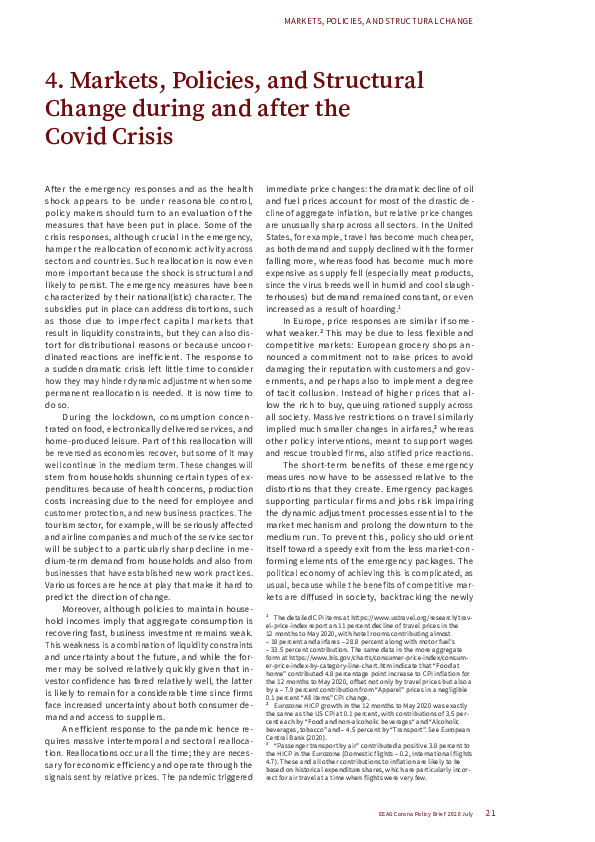Chapter 4: Markets, Policies, and Structural Change during and after the Covid Crisis
CESifo Group Munich, Munich, 2020
EEAG Corona Policy Brief July 2020, 21-26

After the emergency responses and as the health shock appears to be under reasonable control, policy makers should turn to an evaluation of the measures that have been put in place. Some of the crisis responses, although crucial in the emergency, hamper the reallocation of economic activity across sectors and countries. Such reallocation is now even more important because the shock is structural and likely to persist. The emergency measures have been characterized by their national(istic) character. The subsidies put in place can address distortions, such as those due to imperfect capital markets that result in liquidity constraints, but they can also distort for distributional reasons or because uncoordinated reactions are inefficient. The response to a sudden dramatic crisis left little time to consider how they may hinder dynamic adjustment when some permanent reallocation is needed. It is now time to do so.
Enthalten in Zeitschrift bzw. Sammelwerk
EEAG Corona Policy Brief July 2020: Europe’s Pandemic Politics
CESifo, Munich, 2020